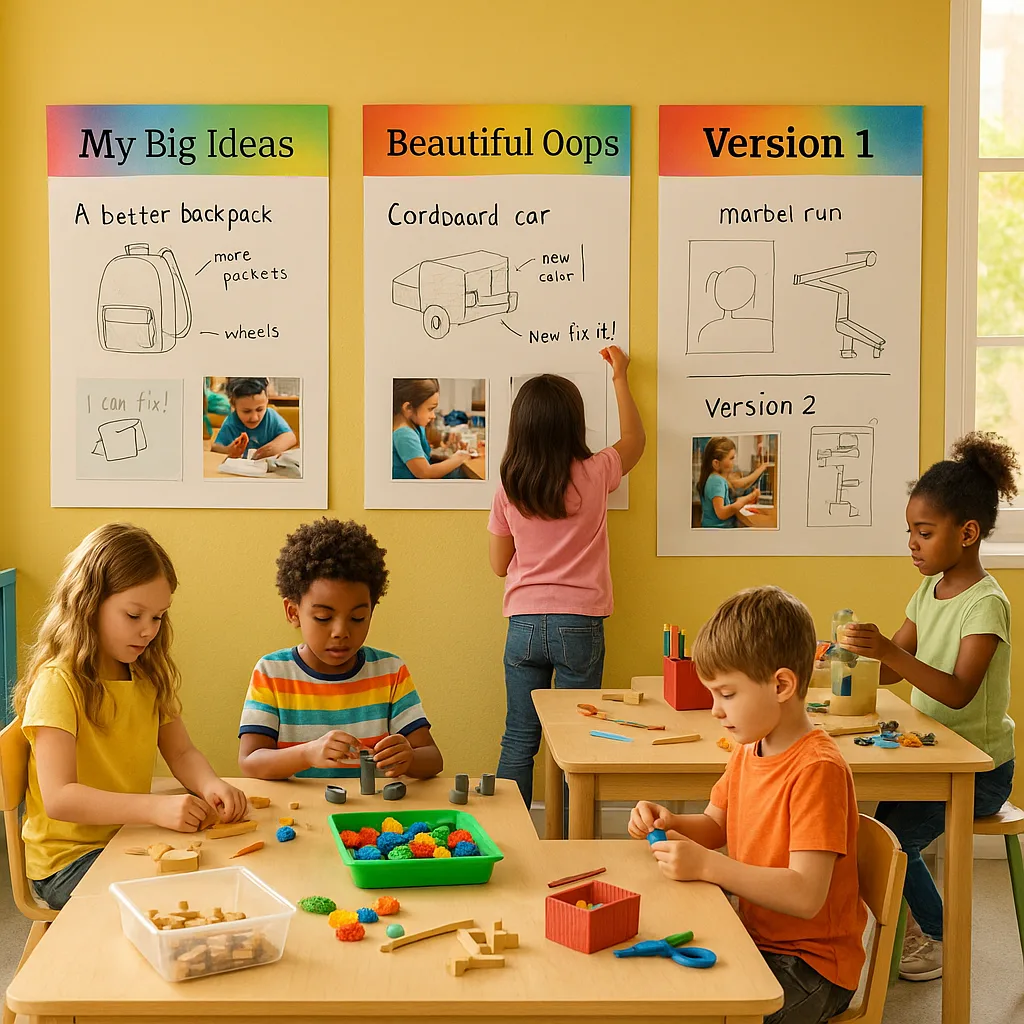Classroom Poster Maker Visual Invention Journals
Creating Reusable Invention Process Posters
One of my favorite discoveries this year has been creating laminated, reusable invention process posters. Using our Amplify Poster Maker, I design templates that students can write on with dry-erase markers, photograph for their portfolios, then wipe clean for the next project. This sustainable approach has saved countless sheets of paper while teaching my first graders about environmental responsibility.
Celebrating Failures: The “Beautiful Oops” Wall
Perhaps the most transformative addition to our maker space has been our “Beautiful Oops” wall—a dedicated space where failures are not just accepted but celebrated as essential steps in the invention process.
Iteration Tracking: Making Progress Visible
Young inventors often struggle to see their progress over time. That’s why I developed our iteration tracking system using oversized poster displays. Each version of a student’s invention gets its own poster panel, creating a visual timeline of improvement that even pre-readers can follow and appreciate.
Practical Implementation Strategies
After months of refining our approach, I’ve discovered several strategies that make visual invention journals manageable, even with 22 energetic first graders! The key is creating systems that students can maintain independently while you facilitate deeper learning conversations.
First, I established “Documentation Stations” around our maker space. Each station includes basic supplies and visual reminder cards showing the documentation process. Students know to visit these stations at natural stopping points in their work. This prevents the all-too-common scenario of trying to recreate the entire process after the project is complete!
Student Success Stories
The transformation in my students’ confidence and creativity has been nothing short of remarkable. Let me share a few stories that showcase the power of visual invention journals.
Tips for Getting Started
Ready to transform your maker space with visual invention journals? Here’s my step-by-step guide for getting started, based on what’s worked (and what definitely didn’t!) in my classroom:
Making It Sustainable
The beauty of using a poster maker machine for school projects like these is the flexibility it provides. I can quickly print templates, celebration certificates, and display materials without breaking our classroom budget.



